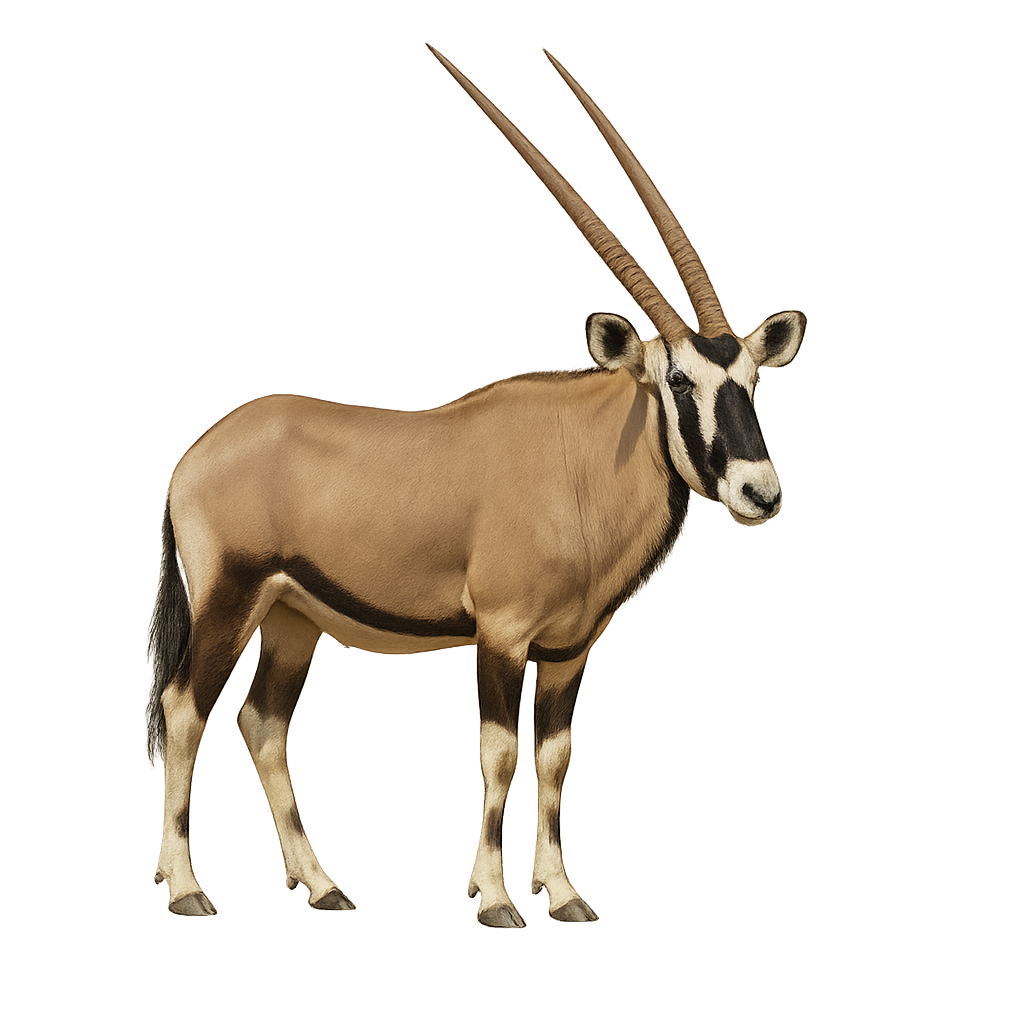Observe and photograph a species in its natural habitat
Learn where and when to observe a species in the wild, how to recognize it in the field, and what habitats it lives in. Get photography tips adapted to its behavior and capture stunning images without disturbing the animal. For full details, open the complete profile in the WildlifePhotographer app.
Gemsbok
Scientific name: Oryx gazella

IUCN Status: Least Concern
Family: BOVIDAE
Group: Mammals
Shyness: Suspicious
Safe distance: 50 m
Breeding season / Courtship: 01.05-31.07
Gestation: 8 à 9 mois
Births: 01.03-31.05
Habitat:
Deserts and arid savannas
Description:
The Gemsbok is a large, sturdy antelope native to the arid regions of Southern Africa. It stands between 1.2 and 1.5 meters at the withers and weighs between 200 and 250 kg. Its coat is primarily gray or beige, with white markings on the belly, legs, and face, giving it a distinctive appearance. It has long, straight horns, which can reach up to 1 meter in length, and are characteristic of the species. The Gemsbok inhabits savannas, steppes, and deserts, where it feeds primarily on herbaceous plants, roots, and fruits. It is well adapted to extreme heat and drought conditions, thanks to its ability to reduce its body temperature and feed on sparse vegetation. While the Gemsbok is capable of surviving in desert environments, it is also able to travel long distances in search of food and water. The species is not currently endangered, but it faces threats related to habitat loss and hunting.
Recommended lens:
>=300 mm
Photography tips:
Approach slowly and quietly, using a telephoto lens to capture images from a distance—gemsboks are large, alert animals that quickly move away if disturbed.
Photograph early in the morning or late afternoon, when soft light enhances their features and activity increases, especially in savannah or desert landscapes.
Capture natural behavior: often seen in herds, offering great opportunities for group shots or striking portraits of this majestic antelope.
Be patient and respectful—keep your distance to avoid disruption.
IUCN status: Least Concern. Respect its arid habitat and avoid disturbance, especially during dry seasons and breeding times.
Ready to take action?
Choose your platform and start your free trial today



